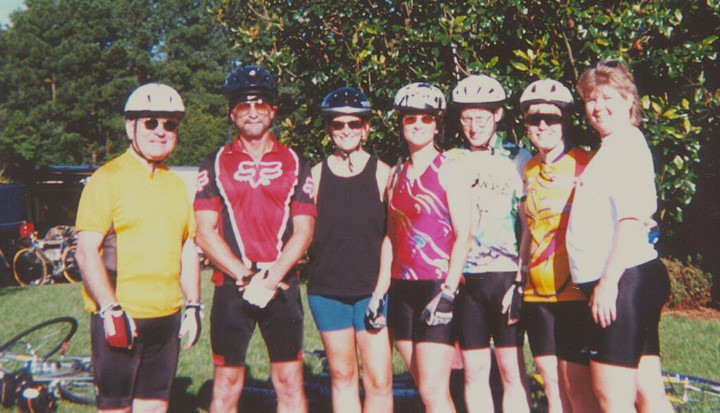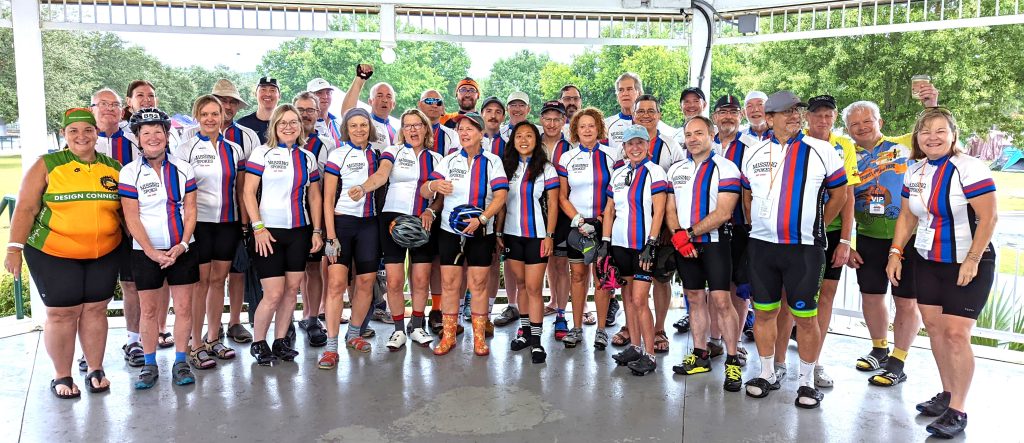MS gets personal
Back in the early 90s, Dan and I were busy with transitions and new beginnings. We were starting our family and trips to the doctor centered around the kids – well visits, vaccines and colds. Then one day, it was about me – joint inflammation, fatigue, numbness and weakness. The doctors couldn’t make a definitive diagnosis, but they ruled out a few things like lupus and rheumatoid arthritis. The symptoms came and went over a number of years and a pattern of exacerbations began to emerge. MRI confirmed lesions consistent with multiple sclerosis.
That was a scary time. We didn’t know what the future held, but at least we finally knew what was wrong.
Within a year of diagnosis, the first disease-modifying medications came to market. I wasn’t a candidate for them at the time, but it was good to know advances were being made. I started to feel better and regain strength, but it was slow going for two years.
Two-wheel empowerment
One day I decided to get out my bike. It had been nine years since I last rode it, but I thought maybe I can do this again. The first day I rode a couple of miles. The next time, it was five miles. Then it was ten miles. Before I knew it, I registered to ride in the MS 150 bike tour. I rode 50 miles over two days. It was so empowering!
Missing Spokes

The next year I rode my first century – 100 miles in one day. The following year, Dan decided to ride with me, and we launched the Missing Spokes team with six other friends and family members in 2000. The Spokes have grown to more than 30 cyclists riding annually in Bike MS: Historic New Bern. They have cumulatively raised more than $1.4 million to end MS forever!

Progress
Momentum to find cures for MS is accerating. There have been more advances in MS research and treatment in the past five years than in the previous 70 years. Since the first disease-modifying therapies became available in the mid 90s, 25 medications that will slow the progression of the disease have been approved by the FDA. However, cures for MS remain elusive.
The National MS Society and MS organizations around the world have committed to a global research strategy and their work is guided by the Pathways to Cures Roadmap which was published in 2022. The Roadmap aims to coordinate, innovate and optimize research investmensts to find cures faster for the nearly 1 million people in the US and 3 million worldwide who are living with MS. Together, we will stop the disease from progressing, restore that damage that has already occured, and end MS forever.
